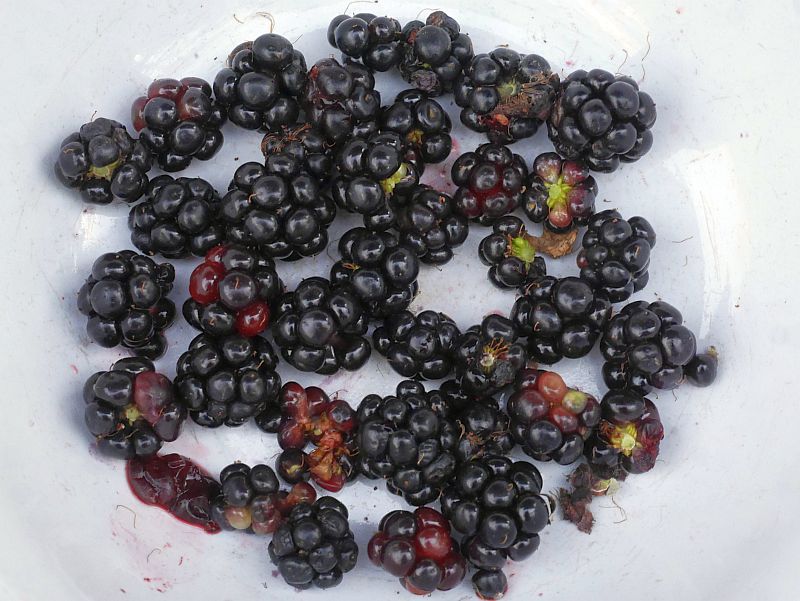As far as possible, I like to eat fresh fruit and berries from the garden, usually with muesli for breakfast. I’ve been self-sufficient for many years, mostly home grown but augmented with wild foraged bilberries / blåbær. From when the cellar stored apples are finished, usually in April to the first haskaps and strawberries are ready, we go over to rehydrated dried fruit. Currently these are the berries and fruit we are eating now in autumn as the first frosts threaten:
1. Elaeagnus umbellata (autumn olive; Japansk sølvbusk)
2. Rubus ‘Sonja’ (blackberry; bjørnebær) – the only blackberry cultivar I am aware of that is hardy enough for our climate, not freezing in winter. Productive with tasty berries too!
3. Ribes divaricatum “Worcesterberry” (Worcesterbær)
4. Ribes biebersteinii (Ribes petraeum var. biebersteinii) (black redcurrant; svartrips); isn’t truly black, more dark purple coloured; hang a long time on the bushes and don’t seem to be taken by thrushes (like blackcurrants)
5. Malus domestica (apple; epler) – eating the windfalls that won’t store long.


Tag Archives: Blackberry
Late Fresh Berries
I love the seasonality of fruit and berries and one group of berries that can be harvested in October and November are particularly valuable when you only eat fresh and, later in the winter / spring, dried fruit and berries. The blackberries (bjørnebær) are finished now and we will be eating fresh stored apples now until at least April. This week after the first heavy frost I was able to continue harvesting Worcesterberries (a selection of Ribes divaricatum) at the bottom of the picture, Aronia prunifolia (purple chokeberry) at left and autumn olives / Japansk sølvbusk (Elaeagnus umbellata)
 1st November 2023: The Autumn Olive is really producing well now! Still some to havest in the community garden!
1st November 2023: The Autumn Olive is really producing well now! Still some to havest in the community garden!
Last berries and pollinators
I thought the berry season was over with the frosts at the end of October, but with the air temperature in November so far above 0c I was able to harvest a few last blackberries (the bush has started flowering again) and 4 raspberries! Various pollinators had also emerged from hibernation including two hoverflies.
Winter ready perennial kales
Even though it was under -5C it was dry and quite pleasant to work outside raking leaves from the wild part of the garden.
I was a bit late this year, the cold spell with 10 days below 0C every day means that there’s already 10cm or so frozen solid in parts of the garden, so crossing fingers that I wasn’t too late.
Here’s part of my collection of perennial kales which are marginal here even with the roots protected. In my world, kales are of the least hardy vegetables :)


The canes of my 30 year old blackberry are almost as long as the south facing wall of my house:

…and my 35 year old seakale bed, covered as maybe 1 in 10 winters they wouldn’t survive!

The last blackberries










